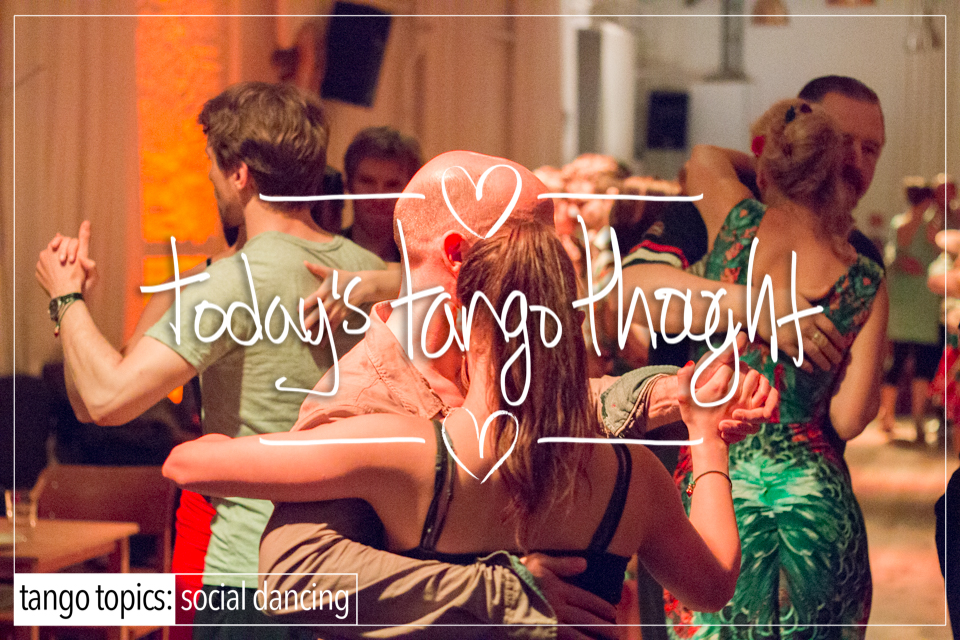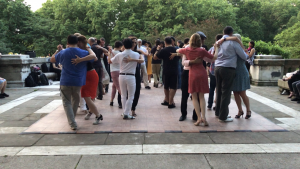As the cartoon character ‘Bullwinkle the Moose’ was want to say to his companion Rocket J. Squirrel, “Oooh I don’t know my own strength” when he pulled a rhinoceros out of his hat while trying to pull the proverbial rabbit instead.
Far too often we experience ‘discomfort’ when dancing. Most of the time we discard it and just accept it as the price we have to pay in order to dance with X, or so that we don’t have to sit through yet another milonga tanda, etc. Sometimes we feel that discomfort, and sometimes we don’t but in general it’s there, most of the time.
Typically that discomfort comes in the form of physiological, tactile pressure, and compression, tension, and rigidity that is generated by our hands (holding onto your partner) and downward pressure with the arms onto someone else (arms, shoulders). And most often that discomfort happens during the Followers Molinete, and in specific their back step. A good portion of the time it happens as a direct result of instability in our walk. We don’t realize that we’re unstable, that our walk is unwieldy, but we are. We essentially hold on to our partners without necessarily realizing that we are doing this. We don’t recognize the telltale signs, and quite honestly no one has ever complained that it’s an issue, so naturally we’re not aware of it. As far as you’re concerned you’re dancing just fine. Right?
Before anything else is said, to the people that believe or erroneously think that this topic is about being a perfectionist, or is arrogant, or any other misguided attempt to mishear the following fact: The embrace should be, can be, wants to be, effortless and easeful. It does not want to be used for stabilization of you and your motion in any way, shape, or form.
Try this: Exercise 1 and then Exercise 2. These, Exercise 1 & Exercise 2, must be done: 1.) by yourself, without holding on to anyone or anything. 2.) In socks, then in shoes. 3.) Without wobbling or wavering in any way, shape, or form. 4.) At 20 BPM (not 60). 5.) For the rotations, the twisty part & then the applied disassociations, you want the motion to be between the beats. So it would be step/beat, twist/applied disassociation, step/beat. Backwards and then forwards.
Now we add one more layer of complexity to it: Assume your gendered role embrace (see exercise 2 example). You must maintain that embrace for the entire time that you’re doing these exercises. And so that we’re clear, no holding the embrace close to your body (tsk, tsk, tsk), it must be out and away as if there is someone in front of you! The embrace can not move in any way, shape, or form. Oh and you can not lock out your frame to do it. Meaning your muscles must be entirely relaxed, no more physical force being applied than to hold up your skeletal frame than is necessary.
Why are these exercises necessary ? They’re to show you that 1.) You’re not as stable as you think you are. 2.) To show you that if there is wobble doing these simple exercises then can you imagine what’s happening when you’re walking at speed, in the embrace ? 3.) That if there’s wobble in the applied disassociations (what you think of as a ‘pivot’), look at what’s happening in this small example, and then apply that wobble to what’s occurring in your molinetes and ochos as a Lead and as a Follow! Still one more reason why we do these exercises is to improve our stability. The first few times that we do them, we’re going to be unstable. However with time, and practice, it changes to something a bit more comfortable and stable, and not so much work.
What does it all mean ? It means that there is in fact instability that’s being generated and that you, not your partners, are generating an uncomfortable dancing experience that manifests itself in the embrace as needing to hold onto your partner in order to dance with them.











